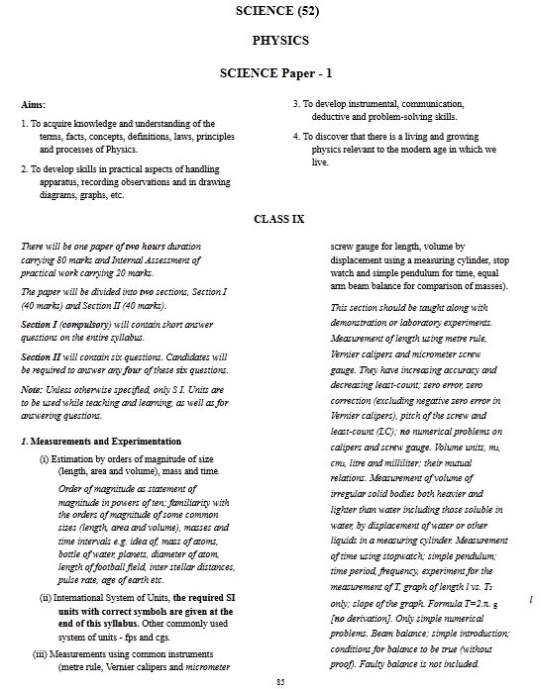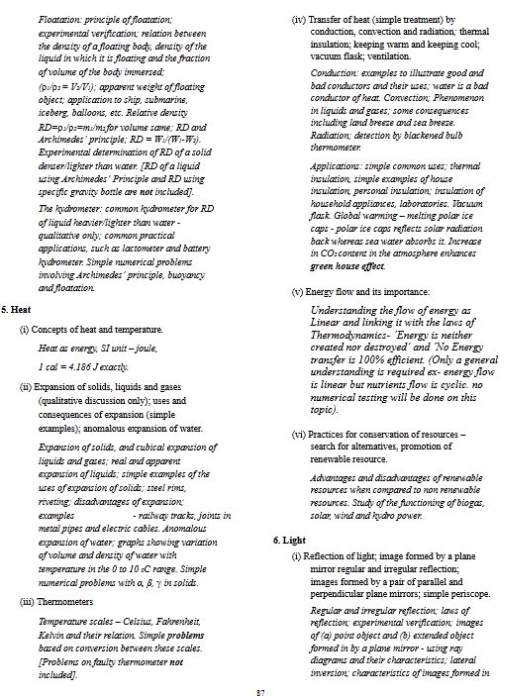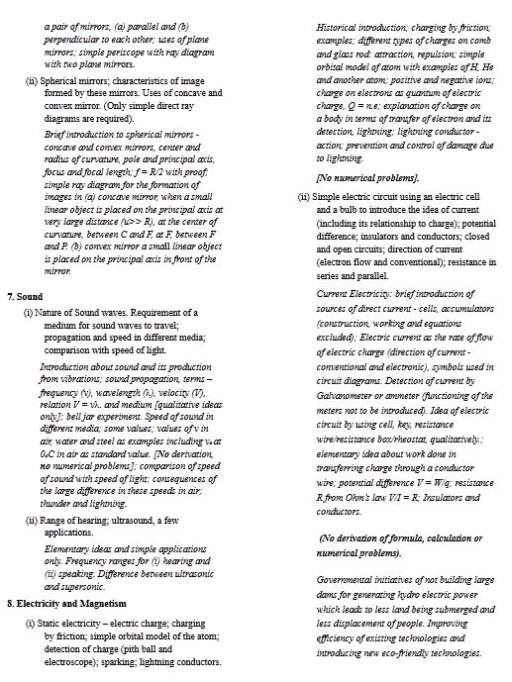|
#4
18th May 2015, 02:12 PM
| |||
| |||
| Re: ICSE exam syllabus
As you need the ICSE exam class 10th syllabus of Science so here it is as follows 1. Measurements and Experimentation (i) Estimation by orders of magnitude of size (length, area and volume), mass and time. Order of magnitude as statement of magnitude in powers of ten; familiarity with the orders of magnitude of some common sizes (length, area and volume), masses and time intervals e.g. idea of, mass of atoms, bottle of water, planets, diameter of atom, length of football field, inter stellar distances, pulse rate, age of earth etc. (ii) International System of Units, the required SI units with correct symbols are given at the end of this syllabus. Other commonly used system of units - fps and cgs. (iii) Measurements using common instruments (metre rule, Vernier calipers and micrometer screw gauge for length, volume by displacement using a measuring cylinder, stop watch and simple pendulum for time, equal arm beam balance for comparison of masses). This section should be taught along with demonstration or laboratory experiments. Measurement of length using metre rule, Vernier calipers and micrometer screw gauge. They have increasing accuracy and decreasing least-count; zero error, zero correction (excluding negative zero error in Vernier calipers), pitch of the screw and least-count (LC); no numerical problems on calipers and screw gauge. Volume units, m3 , cm 3 , litre and milliliter; their mutual relations. Measurement of volume of irregular solid bodies both heavier and lighter than water including those soluble in water, by displacement of water or other liquids in a measuring cylinder. Measurement of time using stopwatch; simple pendulum; time period, frequency, experiment for the measurement of T, graph of length l vs. T2 only; slope of the graph. Formula T=2.π. g l [no derivation]. Only simple numerical problems. Beam balance; simple introduction; conditions for balance to be true (without proof). Faulty balance is not included. 86 (iv) Presentation of data in tabular and graphical form (straight line graphs only). Presentation of data in tabular form of two types: headed columns (e.g. simple pendulum) and numbered rows (e.g., volume measurement). Graph — various steps in plotting a graph, such as title, selection of origin and axes, labeling of axes, scale, plotting the points, best-fit straight line, etc. Meaning of slope and of straight-line graph. [No numerical problems]. 2. Motion in one dimension Distance, speed, velocity, acceleration; graphs of distance-time and speed-time; equations of uniformly accelerated motion with derivations. Rest and motion; [motion in two and three dimensions not to be covered in Class IX]; distance and displacement; speed and velocity; acceleration and retardation; distance-time and velocity-time graphs; meaning of slope of the graphs; [Non-uniform acceleration excluded]. Equations to be derived: v = u + at; S = ut + ½at2;; S = ½(u+v)t; v2 = u 2 + 2aS. [Equation for Sn th is not included]. Simple numerical problems. 3. Laws of Motion (i) Newton’s First Law of Motion (qualitative discussion) to introduce the idea of inertia, mass and force. Newton's first law; statement and qualitative discussion; definitions of inertia and force from first law, examples of inertia as illustration of first law. (Inertial mass not included). (ii) Newton’s Second Law of Motion (including F=ma); weight and mass. ICSE exam class 10th Science syllabus     For complete syllabus here is the PDF file attached; |